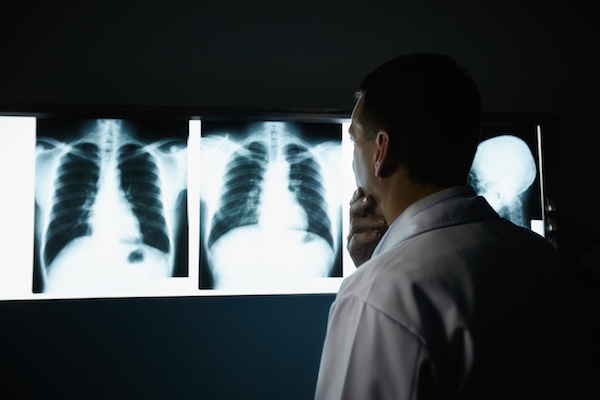
MONDAY, Nov. 30 (HealthDay News) — Studies have shown that exercise can help ward off heart disease and cancer, and now new research shows that the reason why may be found within cells themselves.
Endurance athletes had longer telomeres — DNA at the tips of chromosomes that protect the cell — in their white blood cells than healthy, nonsmoking adults who did not exercise regularly, German researchers report.
Telomeres can be thought of as the plastic tips on the end of shoelaces, which prevent the lace from fraying, explained Emmanuel Skordalakes, an assistant professor of gene expression and regulation at The Wistar Institute in Philadelphia.
Over the life span, cells continue to divide. Each time a cell divides, the telomere is shortened. When the telomere gets too short, the cell stops dividing. When this happens, people age — gradually losing muscle strength, skin elasticity, vision, hearing and mental abilities, and so on, Skordalakes said.
In the study, the researchers measured the length of white blood cell telomeres of endurance athletes and compared them to the telomeres of age-matched healthy nonsmokers who typically exercised less than one hour a week (the control group). Athletic participants included professional runners with an average age of 20 who ran more than 45 miles a week as part of the German National track and field team. A second group of athletes were middle-aged (average age 51) who had done endurance exercise since youth and ran an average of nearly 50 miles a week.
Not surprisingly, the athletes had a slower resting heart rate — a sign of cardiovascular fitness — as well as lower blood pressure, lower body mass index and lower cholesterol than those in the control group.
But the athletes also had longer telomeres than those who were of similar age but did not exercise, and the athletes showed increased activity of the enzyme telomerase, which maintains the telomere.
“This is direct evidence of an anti-aging effect of physical exercise,” study author Dr. Ulrich Laufs, a professor of clinical and experimental medicine in the department of internal medicine at Saarland University in Homburg, said in a statement.
The study findings were released online Nov. 30 in advance of publication in an upcoming print issue of Circulation.
Until recently, the primary role of white blood cells was thought to be fighting off infections, said Dr. Annabelle Volgman, a cardiologist and director of the Heart Center for Women at Rush University Medical Center in Chicago.
Newer research has shown white blood cells do much more, including continuously seeking out abnormal cell growths, such as those that cause cancer, and clearing them away.
One reason why cancer rates increase with age could be that the white blood cells themselves age, and become less efficient at dealing with the abnormal growths, Volgman said. If exercise maintains the youthfulness of the white blood cells by preventing the shortening of the telomere, it may explain why exercise can protect against developing cancer.
Likewise, with heart disease, aging white blood cells (along with high blood pressure and other factors) may allow plaques to accumulate more quickly. By keeping white blood cells young, exercise may enable them to continue to efficiently clear away plaques, Volgman said.
“We know that any physical activity improves cardiovascular health and helps in preventing cancer,” Volgman said. “This study is showing us the molecular basis for this.”
The question, of course, is how much exercise is needed to prevent telomere shortening. Must one be a marathon runner? Or is the standard advice of walking for at least 30 minutes, most days of the week enough?
Because no one really knows the answer, Volgman said, the best advice is to do some sort of exercise regularly. Previous research has shown even moderate activity can be beneficial to the telomeres.
Exercise intensity should be guided by fitness level — in other words, if you’re used to doing vigorous exercise, keep it up. If not, do what you can without overdoing it or risking other injury.
“Not everyone has the makeup to be an elite athlete,” Volgman said. “The safest thing to say is that people do need that aerobic exercise. But there are so many factors that impact aging and if you are going to get cancer or heart disease.”
In addition to testing human white blood cells, researchers also used mice to study the impact of exercise on proteins that have been implicated in heart disease and cancer. The researchers found that the mice with access to a running wheel for three weeks showed increased activity of tumor-suppressing proteins and proteins that play a role in telomere length.
“What these people have shown through this study is that through activity and a healthy lifestyle, you can upregulate the levels of activity of factors that protect or play a role in maintaining the telomeres of humans and mice,” Skordalakes said.
More information
The American Academy of Family Physicians has tips for starting an exercise program.

